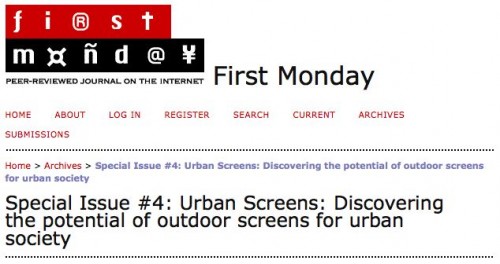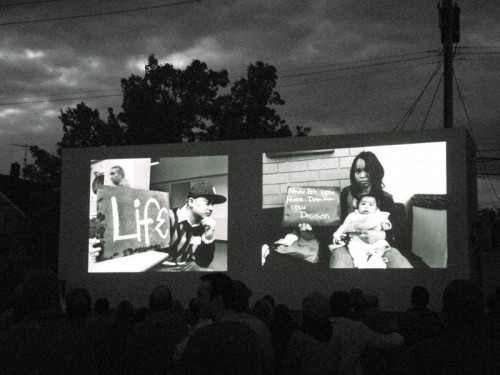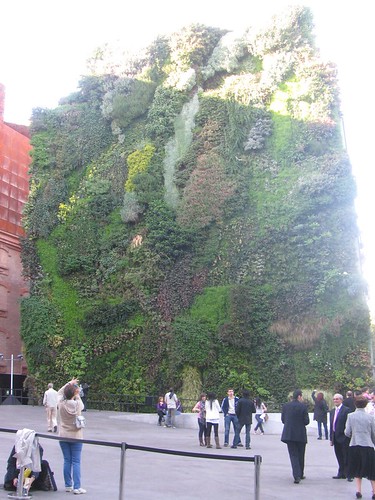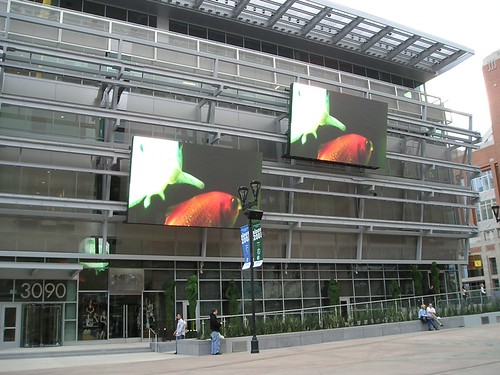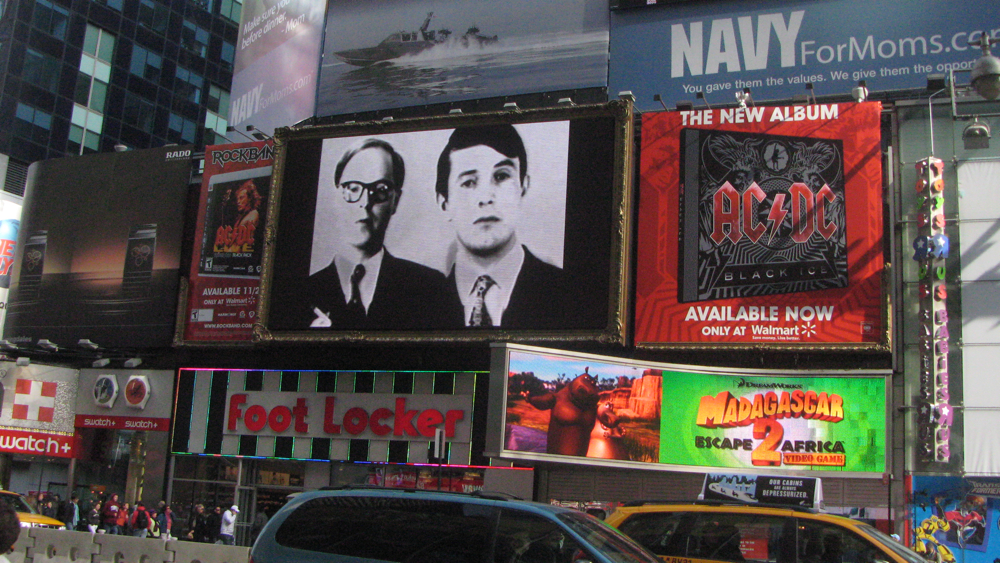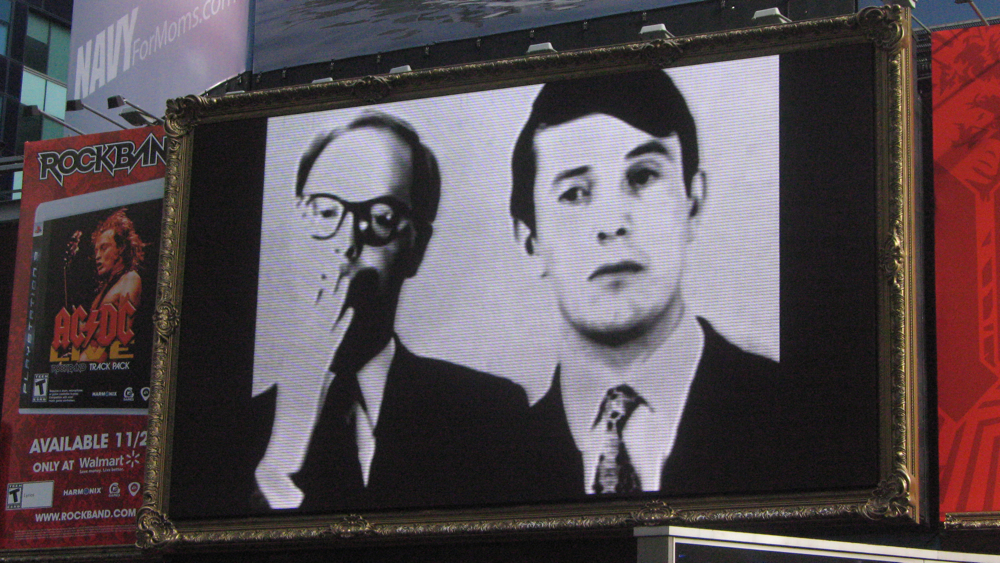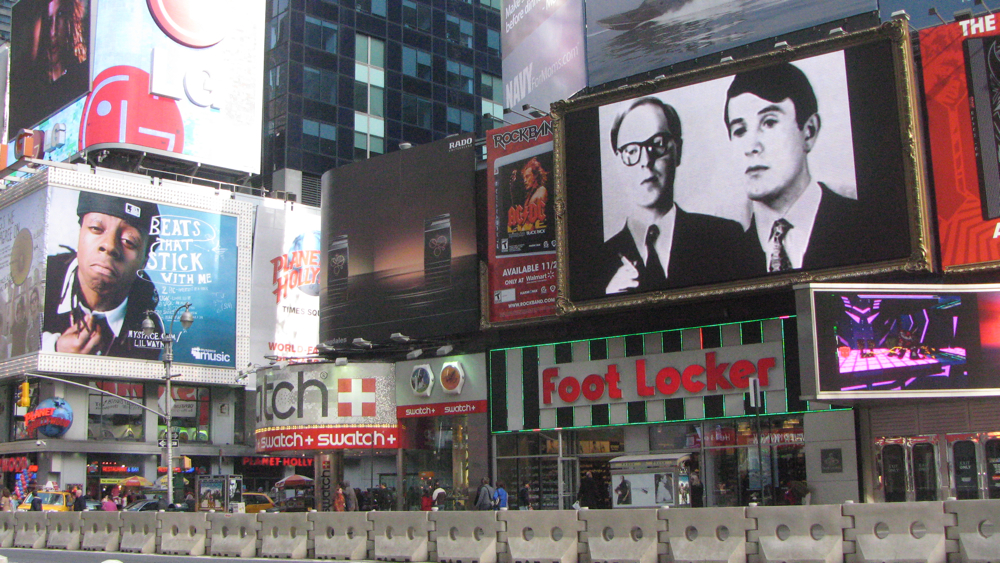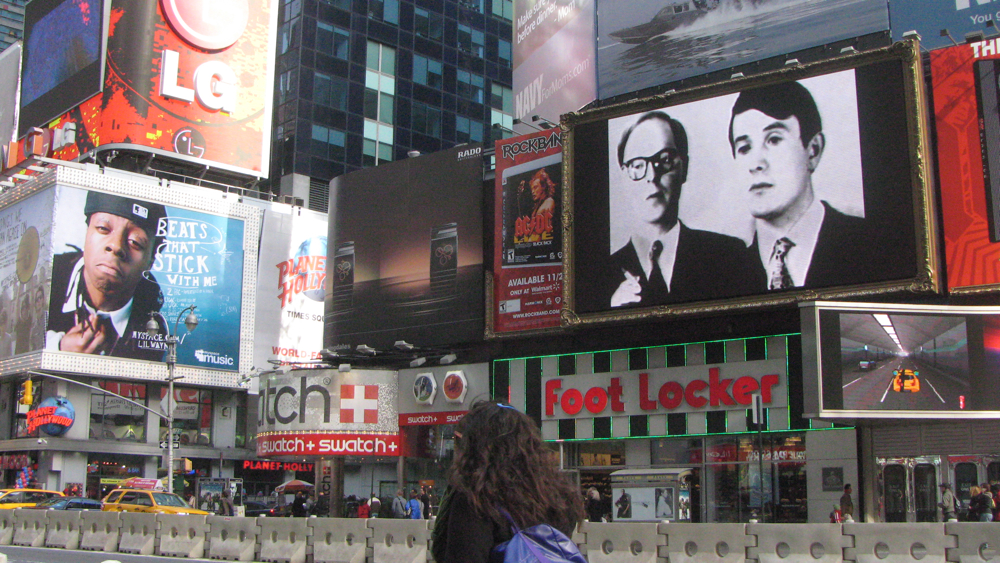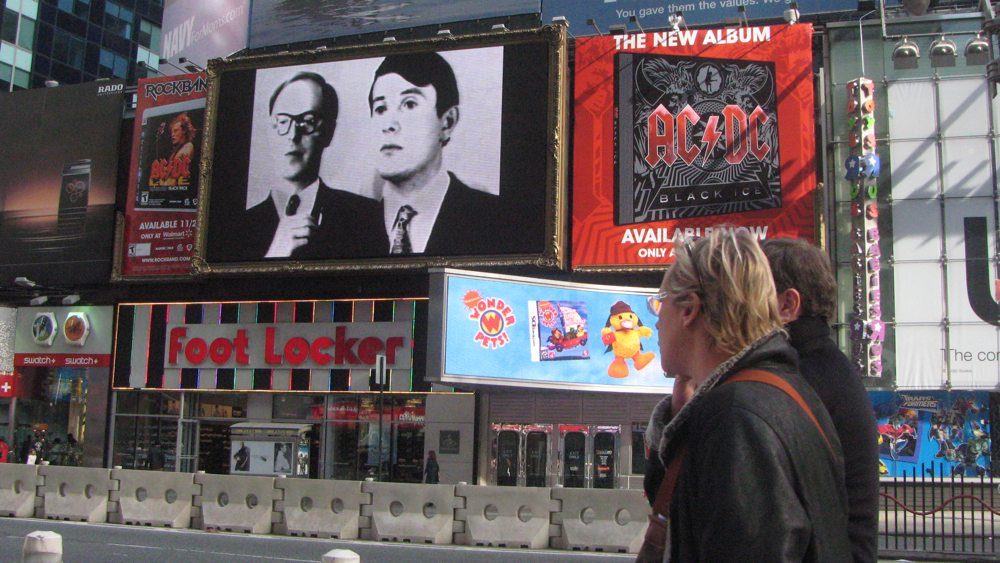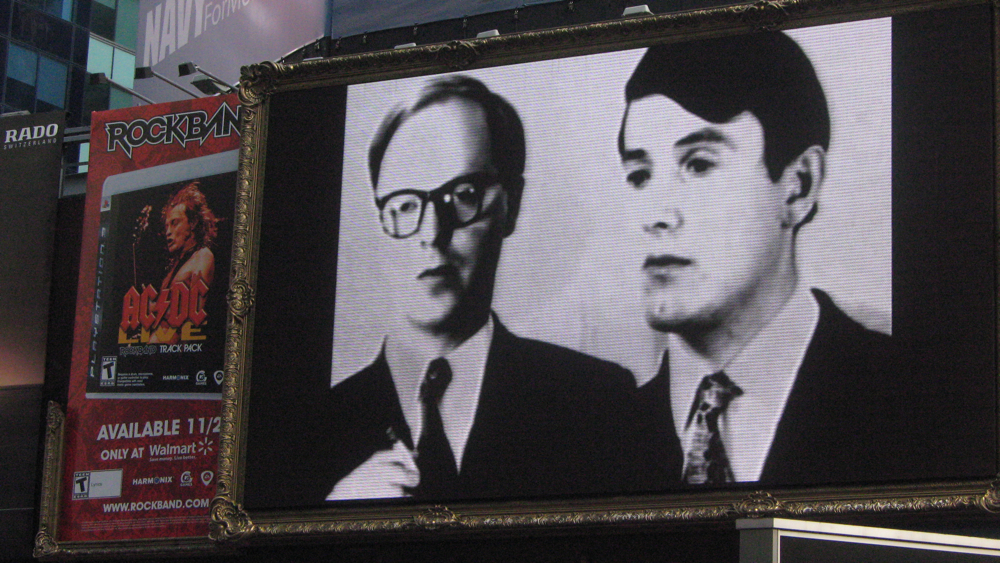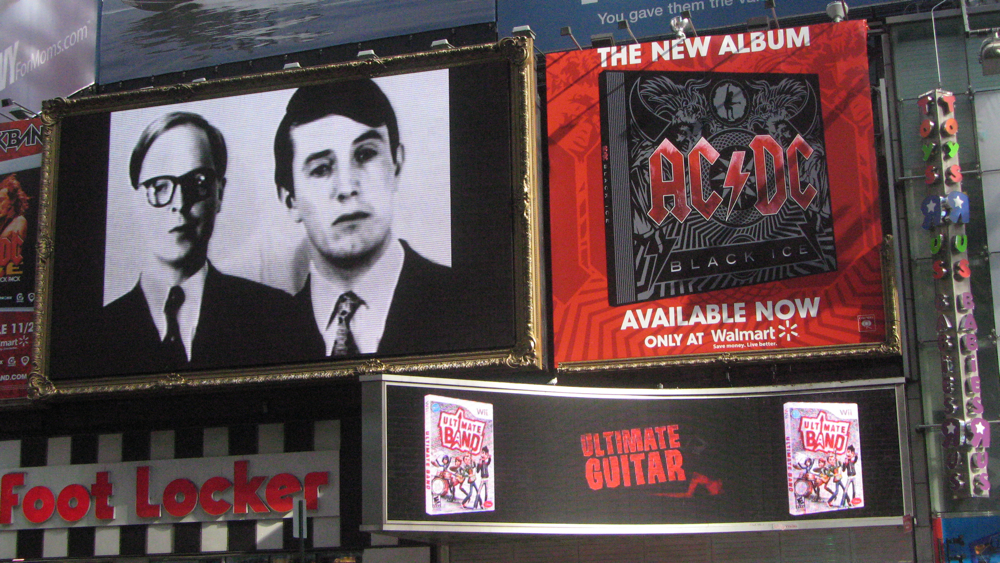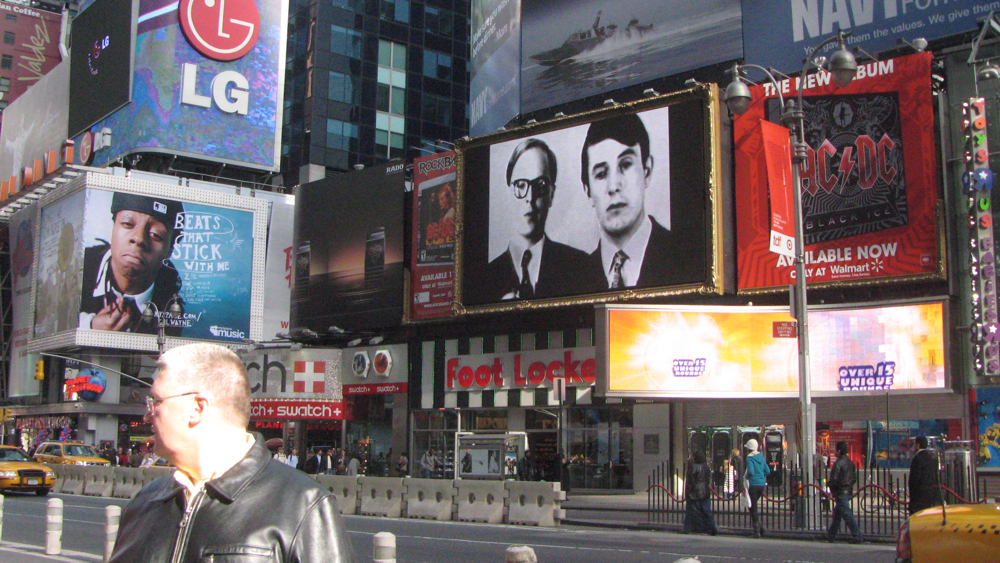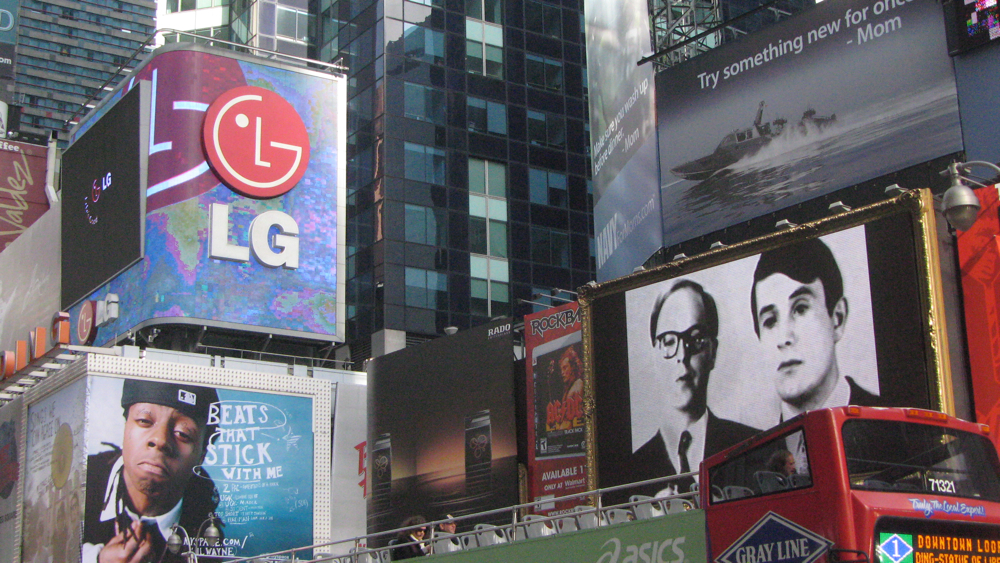Media facades Europe
It would be great to have some U.S. cities as part of this Connected Cities experiment.
Why nuit blanche?
Bring to Light from Max Tiberi on Vimeo.
Brooklyn Street Art: We’re always talking about the intersection of Street Art, Urban Art, Public Art, Performance, Projection Art – do you think that there is a growing interest among city dwellers in reclaiming public space for art?
Ethan Vogt: Yes, Yes, Yes! – I think this festival really struck a chord and that people looking for an authentic, non-consumer, artistic, participatory, and community experience.
Ken Farmer: I think there is a growing interest in authentic, and interactive public art. We are in a beautiful era of D.I.Y. culture. The big, corporate commissioned public art pieces in lifeless lower Manhattan plazas are old news. People want something more relatable and more dynamic. We are seeing a proliferation of low-cost, pop-up elements in public spaces. Some may see it as art, others as amenity, either way…its terrific.
Interesting interview with the organizers of the recent NYC nuit blanche, Bring to Light.
via Huffington Post
See also Bring to Light and Northern Spark.
Discovering the potential of outdoor screens for urban society
Paul Martin Lester, Urban Screens: the beginning of a universal visual culture
Scott MQuirce, The politics of public space in the media city
Lev Manovich, The poetics of urban media surfaces
Anthony Auerbach, Interpreting urban screens
Rekha Murthy, Story space: A theoretical grounding for the new urban annotation
Wael Salah Fahmi, The urban incubator: (De)constructive (re)presentation of heterotopian spatiality and virtual image(ries)
Tore Slaatta, Urban screens: Towards the convergence of architecture and audiovisual media
Ava Fatah gen. Schieck, Towards an integrated architectural media space
Julia Nevárez, Art and social displays in the branding of the city: Token screens or opportunities for difference?
Raina Kumra, Hijacking the urban screen: Trends in outdoor advertising and predictions for the use of video art and urban screens
Giselle Beiguelman, For an aesthetics of transmission
Vera Bühlmann, Intelligent skin: Real virtual
Kate Taylor, Programming video art for urban screens in public space
This should be interestiing reading for a panel I am chairing at the CAA conference in February.
The Responsive City – Fact or Fiction?
Steve Dietz, Artistic Director 01SJ Biennial and Northern Lights.mn
Cameron, McNall, Electroland
Ben Rubin, Ear Studio
Barbara Goldstein, City of San Jose Public Art Program
Mark Shepard, SUNY Buffalo
“This panel will examine the experience of artists and presenters with large-scale, long-term interactive art in the public sphere and the pragmatic, conceptual and philosophical issues such projects engender.
“There is a significant history of festival and exhibition-based public programming of interactive works but long-term and permanent installations are less common. The possibilities for large-scale, interactive art in the public sphere are increasing exponentially, however, and this panel will consist of at least two artists and a presenter, who will discuss their projects in relation to the pragmatics of production and the histories of public and new media art practices, as well as the intersection with civic and economic imperatives embodied in the notion of the creative city. A respondent will critique these projects in relation to issues of agency, free speech and spectacle.”
Is precedent important?

From the home page of Virtual Street Corners, a public art project by John Ewing with Boston Cyberarts & the Knight Foundation
This project looks great, and I’m excited to see it, but I do hope that by launch time there is at least some acknowledgment of Kit Galloway and Sherrie Rabinowitz’s pioneering Hole In Space (1980) project between LA and New York, which informed their LA Olympics original Electronic Cafe (1984), which had some of the same explicit goals of creating virtual discourse and sociability between geographically divided neighborhoods.
Maybe I’m wrong to want this acknowledgment. I’m ambivalent about artists having to be art historians. It’s not their job, even though most I know are incredibly knowledgeable about the history of their practice. I also don’t believe that “first” is synonymous with “better” or that no one else should use scrolling, LED text because Jenny Holzer has. But Kit and Sherrie have 30 years of remarkable experience thinking about and putting into practice some of the same goals and challenges as Virtual Street Corners, which I hope the creators have learned from.
Call for volunteers
Get involved with The University Avenue Project
Photographs by Wing Young Huie are installed over 6 miles of University Avenue in Saint Paul for The University Avenue Project…an extraordinary public exhibition that is on display in storefronts and on building facades May 1 – October 31, 2010.
At the center of the exhibit is The University Avenue Project(ion) Site, located at 1433 University Avenue. On a nightly basis beginning at dusk, Wing’s photographs are projected on 40’foot screens, accompanied by a soundtrack from local musicians. The last Saturday of each month, we invite local talent to take the stage for The University Avenue Project Cabarets.
We are currently recruiting volunteers for the May 29th Cabaret and for the nightly show at The University Avenue Project(ion) Site
- Volunteers must attend a 1.5 -hour training session on Thursday, May 27th from 5:00-6:30pm or Friday, May 28th from 2:00-3:30pm. Volunteer Training will be held at the Project(ion) Site, 1433 University Avenue.
- Volunteers must be available to work on the Project(ion) Site during evening hours. For the month of June, standard volunteer shifts are 8:15pm-10:45pm nightly. At special events, such as the Cabarets, volunteer shift times change slightly.
- Volunteers must be able to lift up to 20lbs to assist with site set-up.
May 29th Cabaret Volunteer Duties
There are two shift options for the Cabarets.
- Shift 1: 6:00pm-8:30pm Volunteers will assist with site set-up, public information and outreach, and smooth running of the Cabaret line-up.
- Shift 2: 8:15pm-10:45pm Volunteers will assist with smooth running of the headlining Cabaret act and stay through the completion of the Project(ion).
Project(ion) Site Volunteer Duties
Volunteers will assist Public Art Saint Paul’s University Avenue Project(ion) Site Managers in the smooth operation of the nightly show 8:15-10:45pm. Volunteers will work with the site manager to:
- Set up and close down site each evening
- Provide project information to the public
- Ensure general safety of audience -Assist with traffic and crowd control
Time commitment:
- 1.5 hours for training session on either May 27th or May 28th at The Project(ion) Site, 1433 University Avenue, Saint Paul.
- 6+ Hours – Volunteers will be asked to complete at least two volunteer shifts. Public Art Saint Paul will work with you to coordinate a schedule.
To register for a volunteer training or for more information contact Ashley Hanson at Public Art Saint Paul 651.290.0921 or email Ashley@publicartstpaul.org
To sign up for Project(ion) site shifts throughout the month of May, please visit the Get Involved section of the project website www.theuniversityavenueproject.com.
Opening night, The University Avenue Project
Wing Young Huie, University Avenue Project opens tonight
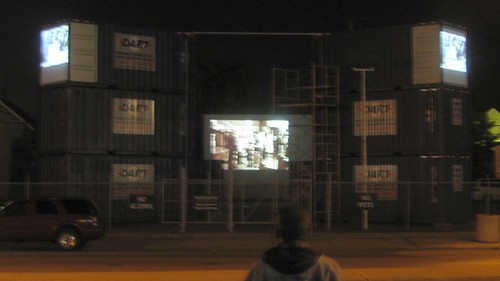
Wing Young Huie reviewing test of the University Avenue Project(ion) site at 1433 University Ave., St. Paul, MN
Northern Lights was invited by Public Art Saint Paul and Wing Young Huie to participate in Wing’s University Avenue Project by proposing a “Project(ion) Site,” where there will be a nightly 2-hour show beginning at dusk of more than 450 of Wing’s photographs, which he has taken over the past 4 years, and which are exhibited along a 6-mile stretch of University Avenue.
The show begins tonight, Saturday, May 1, at 8 pm at 1433 University Avenue, and runs through October 31. More details.
Sky blue night

Leo Villareal, Sky (Tampa). via Public Art Network
Different urban screens
Yesterday, I had to the opportunity to drop in on Medialab-Prado, the innovative organization in Madrid behind Interactivos?, among many other outstanding programs, which the 01SJ Biennial will collaborate with in September.
The Medialab was in the midst of a two-weekend workshop program, HelloWorld!: Contemporary stage creation and new technologies, and the energy in the room when I walked in was contagious. This kind of open lab program is a hallmark of Medialab-Prado’s programming, and the 60 or so people packed in for a series of evening performances and talks only highlighted their community-based strength.
One thing I was suprised to see was a new 40,000 pixel LED screen at Medialab-Prado.
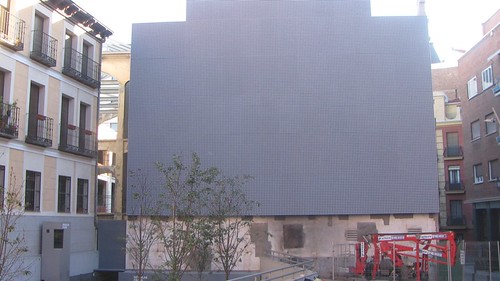
New urban screen, Medialab-Prado
The screen is not yet functional, and you can see that it is in a very close-quarters situation. It will be interesting to see how Medialab-Prado uses this new “venue” with its commitment to open platforms and process.
Medialab-Prado is on a quiet street between the Prado and Reina Sofia museums, around the corner from a new and quite beautiful Caixa Forum center, which includes a different kind of urban screen, what zelen.bg, the “portal site for gardening in Bulgaria,” calls the “last vertical garden of Patrick Blanc.” It’s stunning and forms a fascinating bookend with the new Medialab-Prado screen.
Crystal Mesh
CRYSTAL MESH from autokolor on Vimeo.
Give me a V-I-C-T-O-R-Y for art

Mel Bochner’s Win! (2009) will be painted directly on the walls opposite the monumental staircase in the northeastern portion of the stadium.
There must be something in the water in Dallas. According to Artinfo, Dallas Cowboys co-owner Jerry Jones philosophized about football and contemporary art and the public:
“Cowboys Stadium isn’t just a place to go and see a game or a concert, it’s an experience you share with your family and your community. That will include things that a lot of people wouldn’t anticipate seeing at a stadium — like contemporary art. Football is full of the unexpected and the spontaneous — it can make two strangers into friends. Art has the power to do that too, to get people talking, and looking, and interacting.”

Doug Aitken’s star (2008), which was acquired for the stadium, will be installed in the elevator lobby.
“The program kicks off with 14 commissioned works, including contributions by heavyweights Franz Ackermann, Annette Lawrence, Lawrence Weiner, and Olafur Eliasson, as well as acquisitions of existing pieces by Doug Aitken, Wayne Gonzales, Jacqueline Humphries, and another work by Eliasson. Pieces will mainly be installed in high-traffic locations, such as the four principal entries and the walls above the main concourse concession areas, which measure 15 by 114 feet. Some will wrap around stadium walls.”
Meanwhile, over at the American Airlines Arena, there are eleven large, high resolution LED “Super Screens.”
“Eight of these screens, 4 on each side of the plaza, move on horizontal tracks to allow for a myriad of configurations and motion possibilities. These screens can also be combined in sets of four to create 31’x53’ super screens with HD resolution. High fidelity sound and a theatrical lighting system heighten the experience to an immersive level.”
Originally, the screens solicited digital art submissions and commissioned work by the likes of Jennifer Steinkamp (below),
although the Victory Park website currently states:
“Victory Park is NOT currently accepting submissions for its Victory Arts Program: Stylized live-action, stunning visual storytelling, cutting-edge motion graphics, experimental animation or very short films.”
Let’s hope that the V-I-C-T-O-R-Y for art at the Cowboys Stadium is not quite so short-lived.
The new Ars Electronica Center
I’m looking forward to Ars Electronica this coming fall now that the new Center is open.
“The new Ars Electronica Center is a one-of-a-kind facility. Its uniqueness is betokened by its external form. This bold architectural statement is an instant highlight within the Linz cityscape’s ensemble, yet it still sets itself apart at first—none of its edges run parallel, everything appears skewed, elements simultaneously pulling apart and merging together. A structure that’s constantly assuming new forms depending on the perspective from which it’s viewed. And one that withholds revelation of its scope and dimensions until the moment of direct physical encounter.
“More than 5000m2 of glass facade covering the new Ars Electronica Center was assembled with 1,100 LED light strips (RGBW – Red, Green, Blue and White High Power LED`s) . Each of the approximately 4,400 channels (depending 4 Channel light bar) is individually adressable and adjustable between 0-100%. Imagery from patterns to homogeneous color surfaces are possible.”












